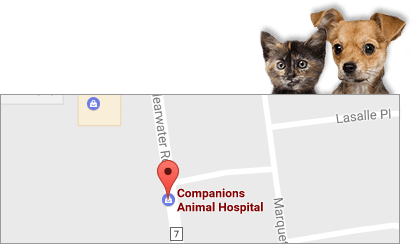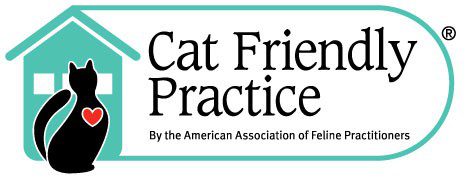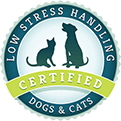DISASTERS HAPPEN, ARE YOU READY WHEN THEY DO?
Disasters can happen here at home or while traveling. Do you have a plan for your pets? It is important to plan ahead, contact the local Red Cross or the city or county preparedness office to find out how you will be notified of an evacuation. Knowing what hotels allow pets and what requirements they have skill make things easier for you in the long run. If you are unable to find a place that allows pets, knowing ahead if a distant friend or relative is able to watch your pet.
Remember, if electricity is lost, dog and cat food may spoil within a few days; especially in the summer. Supplies of fresh water can also be vulnerable during floods and even extended power outages. It is a good idea to prepare an area of the garage or a room in the house suitable for your pet in an emergency situation. The room should be enclosed and protect from the wind and driving rain. Try to make sure your pet is comfortable there ahead of time. Be sure all identification tags and information t microchipping sources are kept up to date. Put together a pet disaster kit ahead of time. Don’t forget to rotate stock (for example when you change your clocks in the spring and fall update your disaster kit.
A well-stocked kit should include:
A) Your Emergency List
1) 2 waterproof folders with you contact information and 24-hour contact numbers (pager, cell phone, work phone). Take one with you in your pet’s disaster kit and leave the other one at home in an obvious location, most likely near your telephone. These contacts can be used by rescue personnel responding to a disaster affecting your pets or by you in a disaster or an evacuation.
2) Your prearranged evacuation site
3) Local contact person in case of emergency when you are not available
4) Out-of-state contact person in case the disaster is far reaching into your locale
5) Your veterinarian and an alternate veterinarian (30 -90 miles away, preferable one who provides boarding)
6) Boarding facility (local) and an alternate boarding facility (30-90 miles away)
7) Hotels that allow pets (90 miles radius)
8) Local animal control
9) Local police department
10) Local fire department
12) Local public health department
13) Local animal shelters
14) Local Red Cross
15) Local humane society
16) Local Society for the Prevention of Cruelty to Animals (SPCA)
17) United States Department of Agriculture Missing Pet Network (www.missingpet.net)
B) Proper Identification on your pet
Make sure your pets identification includes rabies and license tags, if applicable, to help reunite you with your pet in the event that you are separated. Your pet’s identification should provide your name, home address, phone number where you can be reached, and an out- of-state phone number of someone that you will be in contact with during or soon after the disaster/evacuation. If possible, include your veterinarians name location and phone number.
C) A 2 day supply of your pets regular food (don’t forget a can opener if you need it).
D) A 2 day supply of water
E) Food and water bowls
F) Copies of your pets vaccination and medical records
G) A one week supply of any medications that your pet needs.
H) Carrier, leashes, collar or harness (a carrier big enough for a small litter box for cats)
I) Photograph of your pet in case you get separated
J) Litter box and litter
K) Your pets first aid kit and manual
Get to know your area or the area that you are traveling to so you and your pet are prepared for anything that could happen. When you are prepared with your pet’s disaster kit and having a plan can save on the amount of stress you and your pet will have when a disaster hits.
Jesse, Veterinary Nurse Assistant












